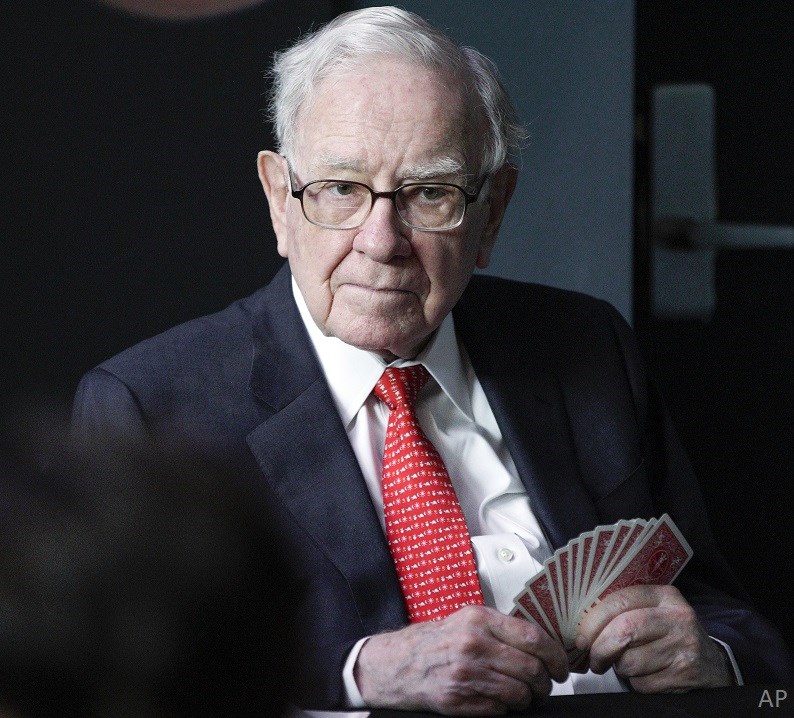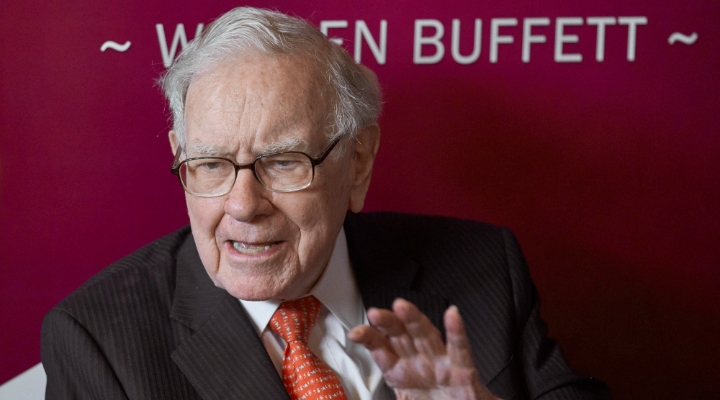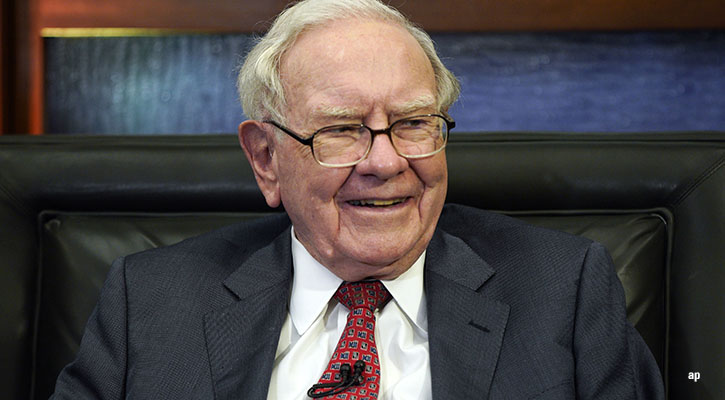
It has been a tough decade for Berkshire Hathaway (BRK.A)/(BRK.B), which came out of the 2008-09 global financial crisis in solid shape. Having seen little impact from that event, the insurer was able to put a meaningful amount of capital to work in a handful of very lucrative investments while acquiring BNSF Railway and dedicating capital to Berkshire Hathaway Energy’s internal and external investments.
For much of the past decade, though, the company has struggled to find enough suitable investments to keep its cash balances from expanding; cash and cash equivalents hit a record US$147 billion at the end of June 2020. Meanwhile, several of its investments of the past 10 years have not fully lived up to management’s expectations: the Kraft Foods merger with Heinz, the Precision Castparts acquisition, taking 10% equity stakes in each of the four major U.S.-based airlines, and supplying Occidental Petroleum with $10 billion to help fund that company’s unsolicited bid for Anadarko Petroleum.
Some of Berkshire’s difficulties putting money to work can be ascribed to a more competitive acquisition environment for the types of assets the insurer generally pursues, with private capital fundraising picking up during the past decade and these funds holding an ever-expanding cache of dry powder--estimated by PitchBook to be US$2.3 trillion at the start of 2020--to dedicate to deals. The majority of the blame can be laid at the feet of Berkshire’s own acquisition criteria, which have historically kept the company from engaging in unfriendly takeovers, auctions, or bidding wars. That’s not to say that this is a bad strategy, especially as it can keep a company like Berkshire from overpaying for assets; it’s just that such strict criteria eliminate the wiggle room that might be needed to get some deals done.
Given these troubles on the reinvestment front, we’ve been surprised that Berkshire has not stepped up efforts to return capital to shareholders until more recently, especially with most of its excess cash balances earning next to nothing in a low-interest-rate environment. In the near term, we expect the body blow delivered by the COVID-19 pandemic and subsequent recession to diminish the company’s free cash flow, which should slow its ongoing buildup of excess cash. Over the long run, we expect the pandemic and its economic fallout to push Berkshire into a more regular return of capital to shareholders--especially with a transfer of leadership increasingly more likely in the decade ahead.
In the meantime, we continue to view the company’s decentralized business model, broad business diversification, high cash-generation capabilities, and unmatched balance sheet strength as true differentiators for the company. As such, are always looking for opportunities to recommend the name to long-term investors, with our thesis focused on the expected evolution of the insurer from its past as a reinvestment machine into one that returns more capital to shareholders.
Some long-term investors continue to be critical of Berkshire Hathaway, laying out several reasons for their avoidance of the shares, including the following:
- Berkshire’s size and other factors will prevent it from growing at a hefty clip.
- Berkshire has too much cash and not enough good ideas.
- The performance of businesses acquired during the past decade has been underwhelming.
- Berkshire has been poor historically about returning capital to shareholder.
- Berkshire’s shares will get pummeled once CEO Warren Buffett departs the scene.
But our long-term thesis on Berkshire still revolves around five key considerations:
- Berkshire’s wide economic moat is more than just a sum of its parts. The company has evolved into a broadly diversified conglomerate with a collection of moaty businesses, most of which throw off excess cash that has traditionally been earmarked for investments or acquisitions.
- The company’s balance sheet strength continues to be a competitive advantage. Berkshire has demonstrated an ability to use its large and rock-solid balance sheet to not only support the growth of its insurance operations but make strategic investments and acquisitions.
- Berkshire’s broad diversification provides investment opportunities and minimizes losses. The business model allows Berkshire to invest/reinvest the excess capital thrown off by its subsidiaries, make long-term business decisions, and minimize losses when they do occur.
- Berkshire is likely to generate returns that exceed our estimate of its cost of capital. The advantages provided by its business model should allow the company to expand book value and returns on equity at a high-single- to low-double-digit rate in most years.
- Berkshire is evolving into a vehicle for returning capital to shareholders. With investment opportunities few and far between, the company is bouncing up against the $150 billion cash holdings threshold where Buffett will need to look at returning more capital to shareholders.
COVID-19 has pressured some parts of our core thesis. Most of Berkshire’s businesses are facing challenges as a result of the outbreak and subsequent shutdowns and recession, diminishing some of the benefits of diversification. The company’s ability to reinvest capital has been complicated by government-provided liquidity and greater levels of private capital competing for deals. We expect these challenges to be short-lived, with Berkshire coming out stronger on the other end.
- Berkshire’s insurance unit will face slower growth in the near term and potential litigation longer term. Insurance demand will slow due to the pandemic and subsequent recession. Claims losses (including adverse litigation outcomes) tied to COVID-19 are likely to exceed past events as a percentage of industry capital but still be manageable, except perhaps in a worst-case scenario.
- BNSF will face volume shortfalls until the economy rebounds. Despite the pullback in rail volume this year due to the pandemic, as well as heavy competition from depressed truckload rates, we expect to see volume improve once we get past 2020. That said, BNSF could end up competitively disadvantaged relative to Union Pacific, its closest competitor, if it fails to adopt precision scheduled railroading.
- Berkshire Hathaway Energy is not recession-proof but remains a key investment area. Stronger residential demand for electricity has mitigated some of the commercial and industrial sales the industry lost this year, but overall demand is unlikely to return to normal until well into 2021. In this environment, we expect BHE to devote capital to existing infrastructure (especially renewables) as well as acquisitions.
- Berkshire’s manufacturing, service, and retail division is its most economically sensitive segment. Almost every one of the MSR division’s segments--industrial products, building products, consumer products, service, retailing, and retail/food-service distribution--will see weaker near-term demand, with some of its smallest businesses likely not surviving the COVID-19 shutdowns and subsequent recession.
Berkshire’s balance sheet strength continues to be a competitive advantage. The insurance operations are overcapitalized by more than 2 times, which allows Berkshire to take on large and unique underwriting deals that few companies have the capacity to endure. And the company’s rock-solid balance sheet--with liquid holdings of US$138.9 billion in cash and equivalents (US$113 billion of which could be considered dry powder), US$19.4 billion in fixed-income securities, and US$245.3 billion in equities at the end of September 2020--allows it to move quickly on strategic investments and acquisitions.
Also, Berkshire should generate returns that exceed our estimate of its cost of capital. Whether the company is run by Buffett or his successors, Berkshire doesn’t need to do all that much to outearn its cost of capital, with the advantages provided by its business model allowing the company (in most years) to expand book value per share at a high-single- to low-double-digit rate, which is comfortably above our estimate of Berkshire’s weighted average cost of capital of 7%−8% the past 10 years.
And finally, Berkshire has begun its evolution into a vehicle that returns capital to shareholders. During the first three quarters of 2020, Berkshire repurchased nearly US$16 billion of its own shares and is on pace to exceed US$20 billion in stock buybacks this year. This is well above our own past projections that had Berkshire acquiring US$1.5 billion−US$2.5 billion of common stock each quarter over the next five years.
Despite the recent runup in the shares, Berkshire remains slightly undervalued, trading at around a 10% discount to our fair value estimate of US$380,000 ($253) per Class A (B) share. On a price/book basis, the shares are trading at 1.30 times calculated third-quarter book value per share of US$261,647 ($174.43) per Class A (B) share, and 1.22 and 1.23 times our estimates of book value per share at the end of 2021 and 2022, respectively. For some perspective, during the past 5 and 10 calendar years, Berkshire’s shares have traded at an average of 1.44 and 1.41 times trailing calendar year-end book value.





















